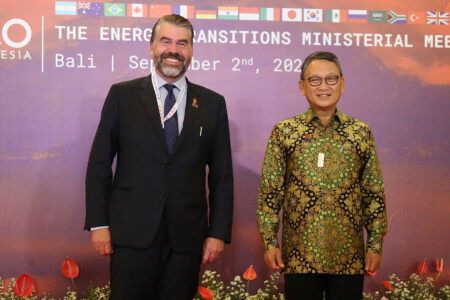
These are not favourable times to advance a transparency agenda in the federal government. Transparency features nowhere in the current government’s priorities as it battles to push through the COVID emergency and keep the Canadian economy on an even keel, while trying to survive as a minority government. Transparency concerns made no impact on the election which served up a repeat minority Liberal government, nor did it feature in any of the parties’ election campaign platforms.
If the idea of making government decision-making as open as possible in the interests of accountability and an informed citizenry lacks traction, the problem has been compounded by the ways in which a transparency agenda has been crudely politicized – as with the demand by opposition parties for access to all records, classified or otherwise, related to potential security breaches at the National Microbiology Laboratory in Winnipeg.
We are worlds away from the summer of 2017, when the then-majority Liberal government announced an ambitious National Security Transparency Commitment (NSTC) designed to transform a persistent and embedded culture of secrecy within the government’s many departments and agencies with a national security function. The NSTC was based on six overarching principles, organized around the themes of information transparency, executive transparency (the legal foundations of national security) and, most importantly, policy transparency – explaining national security to Canadians and engaging with them.
The commitment lost its champion when Public Safety Minister Ralph Goodale was defeated in the October 2019 election. COVID-19’s arrival in early 2020 ushered in an era of hybrid parliaments and crisis management. The national security transparency commitment became a back-burner item, while the government allowed the health emergency to sideline the already deeply flawed access to information regime, thus putting it well offside one of its own commitments on information transparency.
An advisory group established by the Public Safety department in 2019 (The National Security Transparency Advisory Group or NS-TAG) has tried to keep the flickering flame alive. It is an appointed body whose 11 members are chosen, based on unknown criteria, by the deputy minister of Public Safety, to whom it reports. The membership has been diverse, with representatives drawn from former senior public servants, academics of varying expert backgrounds and civil society organizations.
Its first report, issued in January 2021, showed an advisory group trying to come to grips with the challenges of national security transparency, and able, or willing, only to offer up some general nostrums, while pursuing its own interests in relations between the national security community and racialized minorities and in issues of harassment and discrimination in national security agencies. The undoubted importance of such issues has clouded the issue of whether they really fall within the advisory group’s terms of reference, or whether the advisory group is best placed to pursue them.
How to institutionalize transparency in national security
Improving transparency in Canada’s national security and intelligence community
The key to the group’s success lies elsewhere in its ability to help translate the six enumerated principles of the National Security Transparency Commitment into practice, no matter how unpromising the environment for change might be. These are its marching orders, defined in the NS-TAG terms of reference: “to advise the Deputy Minister of Public Safety Canada and the Government of Canada’s federal departments and agencies with national security responsibilities on how to implement the NSTC.”
The NS-TAG’s second report is now out, and it is an important test of the group’s effectiveness and alignment with its mandate. Its co-chairs have written an explainer article about the report for Policy Options, which provides a useful summary. The report’s title suggests an effort to recapture the ambition of the 2017 commitment: “The definition, measurement and institutionalization of transparency in national security.”
But the report is short — the main text is just over 10 pages. The original principles laid down in 2017 are treated cursorily and are nowhere reproduced in full in the report. Readers wanting to understand the original NSTC will have to be content with brief references to some of the principles, which are described, curiously, as “positive suggestions,” nothing more.
When a commitment becomes a “positive suggestion” you know you are in trouble. One of the most important of the original set of principles, gets this treatment. It emphasised the importance of informing Canadians “of the strategic issues impacting national security and its current and future plans for addressing those issues.”
That sounds a lot like a call for the publication of an updated national security strategy to replace the long forgotten 2004 version, an issue that has been taken up by the Centre for International Governance Innovation’s (CIGI’s) National Security Strategy project.
But the advisory group renders this as a more muted call for dialogue with civil society, media, academia and businesses without any demands placed on government for the publication of threat assessments, intelligence priorities, or strategic policy which might drive such engagement.
If the NS-TAG is to add value it needs to regroup and redouble its efforts around the principles of the original commitment, not plead with departments and agencies to “commit” to the commitment – an astonishingly weak suggestion. The advisory group’s concern about the need for metrics to track progress with the national security commitment is valid but needs more specific direction. The original principles provide that direction, and departments and agencies should be required to demonstrate deliverables, past, present and future, measured against those specific principles. The diffuse list of indicators called for by the NS-TAG will not do the job.
While the NS-TAG recognizes the need for champions, its formula for achieving them is pure inside-Ottawa baseball. It calls for performance agreements for deputy ministers, likely to turn out to be a box-ticking exercise. In truth, a transparency commitment needs a champion at the political high table – the cabinet. Natural candidates would be the prime minister or the public safety minister. To get things done within the bureaucracy, the official best placed to push the transparency commitment forward would be the national security and intelligence adviser, who is charged with the overall coordination of the national security community.
Here and there, the advisory group’s second report contains important sparks, including a recognition that the national security threat landscape is changing, which it links to a heightened importance of explaining to Canadians how the governance of national security is being transformed in response. It also has important things to say about the perennial problem of over-classification of records, though its proposed solutions lack bite. The advisory group recognizes the key place of cyber security in the nation’s defences and appreciates that the adoption of technological tools to combat it must not take place in secret.
The NS-TAG’s approach to its work may be understood as pragmatic and geared to the realities of the current low-attention environment and to the decentralised nature of the national
security community in Ottawa. It knows that its mandate is challenging. But its approach is disappointing. A low-key endeavour that ultimately plays into the hands of a culture of secrecy is not going to encourage real change. To borrow from Otto von Bismarck, it is a velvet glove lacking an iron fist of ideas and proposals. Velvet gloves are an easily discarded costume accessory. That would be a sad fate for the advisory group and for the broader national security transparency commitment.









